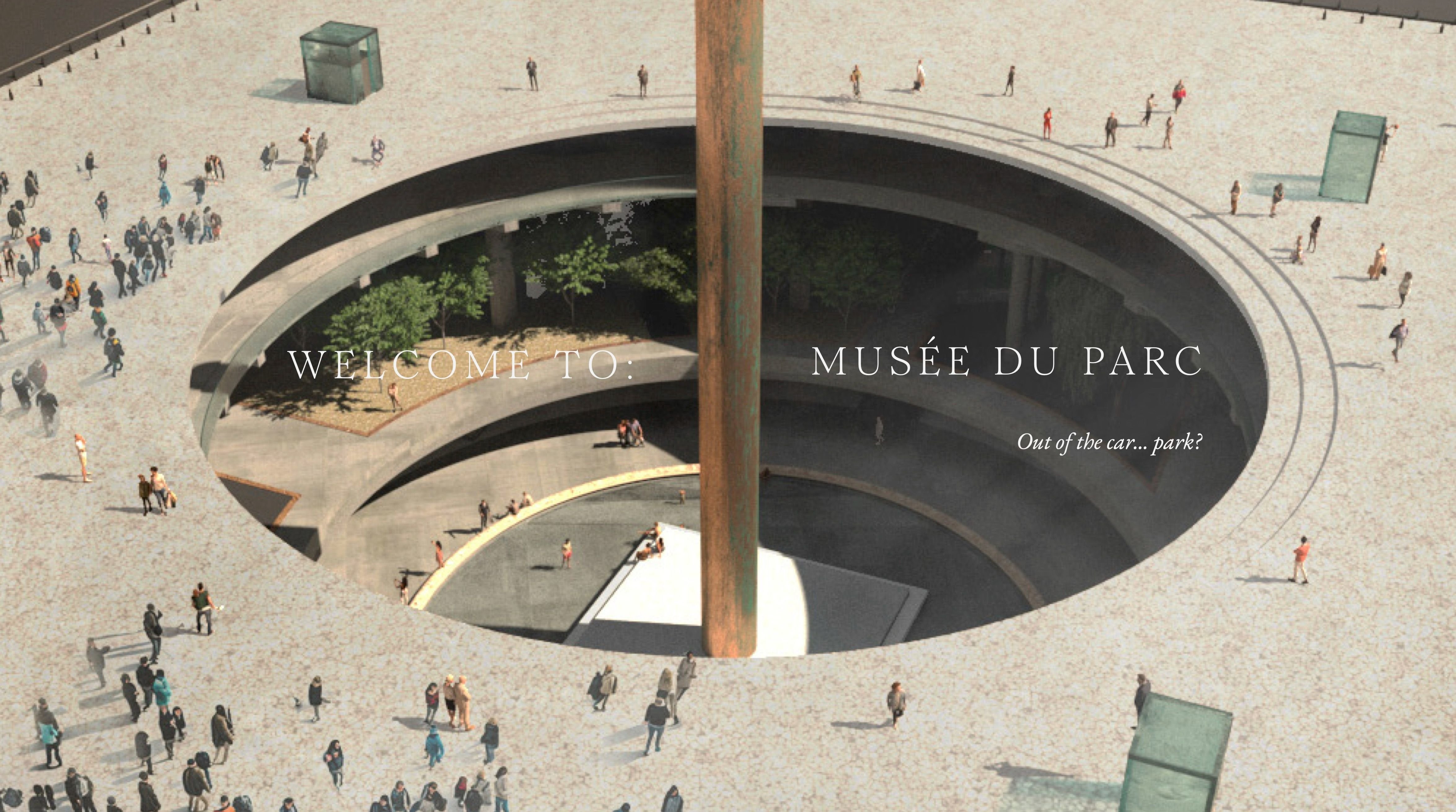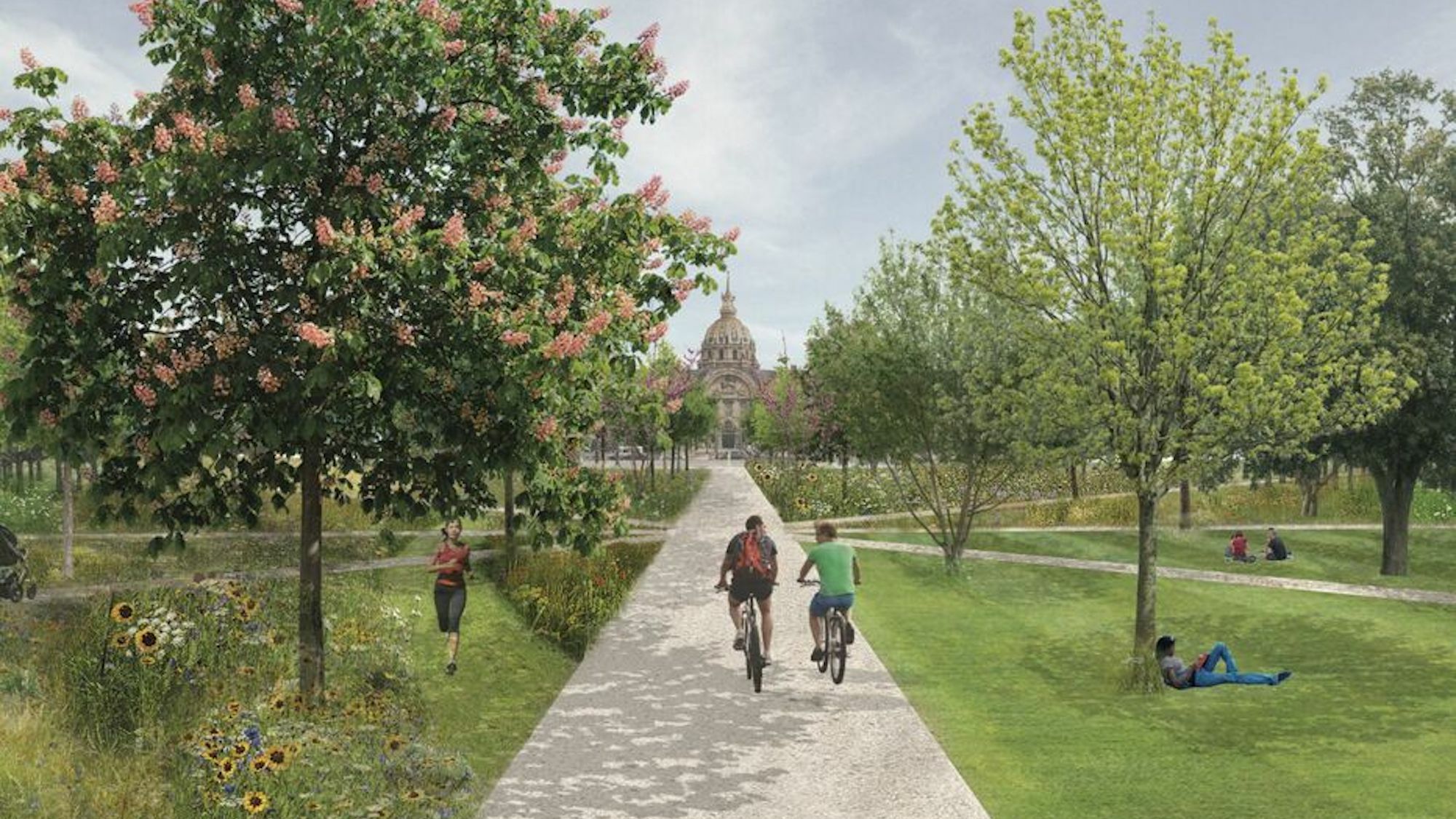It's Bas Smets, a Belgian landscape architect in charge of imagining the next square of Notre-Dame, who proposed this quite complex project as part of his course on biopheric urbanism at Harvard. And one thing is certain, the students who tackled the subject have some interesting ideas.
A gradual evolution
Each group was given the mission to imagine solutions for increasingly catastrophic scenarios: +2°C in 2025, 3 in 2050, 4 in 2075, and finally 5 in 2100. After spending a week in the capital and meeting with local urban planners, they presented several projects, and on paper, it seems quite appealing to us.
First of all, there are the draining soils, which allow for rainwater storage and planting more trees along the Haussmannian axes. This idea allows for greening the space, providing shade, and most importantly, preventing floods. And considering the amount of water that has fallen in recent months, we can understand the usefulness.
Next, there are the green roofs, which help reduce the urban heat island effect and provide additional green spaces. It's a great way to create a healthier and more pleasant environment.
And let's not forget about the innovative use of sustainable energy sources. The city could benefit greatly from solar panels and wind turbines, which would not only reduce the dependence on fossil fuels but also contribute to a greener and cleaner atmosphere.
Lastly, there's the idea of creating more pedestrian areas and bike lanes. By prioritizing non-motorized transportation, we can not only reduce air pollution but also promote a healthier and more active lifestyle for the residents.
Overall, these proposed solutions have the potential to transform the city into a more environmentally friendly and resilient place. It's exciting to think about the positive impact they could have on our future.They have proposed to plant trees everywhere in the main squares: the square in front of the Hôtel de Ville, the Place de l'Étoile, and even the Invalides lawn, everything is being done to demineralize the large spaces, while respecting the existing architecture and local urban planning, of course.
We seek refuge indoors.
Another measure is to transform museums, train stations, and schools into places of refreshment during excessively hot weather.heat wave", creating links with nearby parks or the banks of the Seine. One of the students even talks about a "vegetalized Panthéon", and it's a project that speaks to us.
Finally, another idea, in case of a drastic increase in temperatures above 5 degrees, is to transform Paris into an underground city. One of the groups has therefore designed a huge underground walkway, circling the capital, following the routes of lines 2 and 6. A somewhat extreme project, but we think that as a last resort, it could be practical.

The parking lot of Place Vendôme transformed into an underground welcome area © GSD Harvard / Crane Sarris
The Invalides lawn completely replanted, respecting the perspective of the place © GSD Harvard / Roxanne Gardner
In any case, we find these projects rather sensible, and especially very relevant, because if, a few years ago, 50°C in Paris would have been unimaginable, we still think more and more that it could be a reality very soon, and that it would be good to prepare ourselves a little bit.
